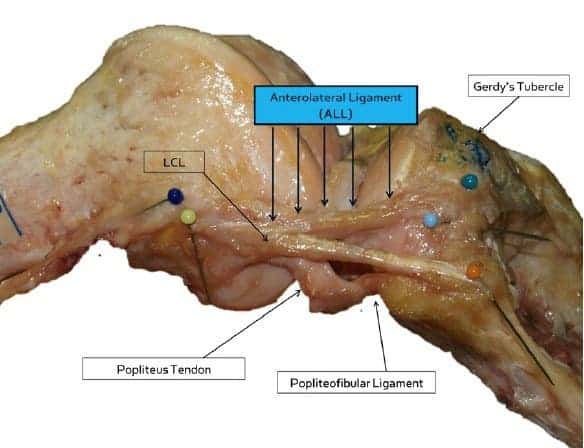The human body is a complex biological entity in seemingly perfect harmony as thousands of components play their part in tandem. Discovering, describing and understanding how each of this body parts function and work together is the primary role of human anatomy. Some of you might be surprised to find that human anatomy is yet from being exhaustively described, as new body parts are discovered ever so often. For instance, doctors at University of Leuven, Belgium recently report they’ve discovered a new ligament in the human knee. Moreover, its function has also been revealed.

Termed the anterolateral ligament (ALL), and located in the human knee, the ligament’s existence was first proposed in 1879 by a French surgeon but couldn’t be proven until recently. Deep anatomy studies are made on cadavers, and death has the nasty habit of spoiling bodies and making observation difficult especially of subtle body parts. The researchers led by Dr. Steven Claes, an orthopedic surgeon and study co-author at the University of Leuven, Belgium performed an in-depth analysis of 41 cadaver knees and found the ligament in 40 of the bodies.
“The anatomy we describe is the first precise characterization with pictures and so on, and differs in crucial points from the rather vague descriptions from the past,” Claes said. “The uniqueness about our work is not only the fact that we identified this enigmatic structure for once and for all, but we are also the first to identify its function.”
So what’s the ALL good for? One common injury to the knee is related to another ligament, the anterior cruciate ligament (ACL), which causes what’s known as a “pivot shift”. Basically, do the intense stress your knee stays in position while the rest of the leg moved, causing severe complications least not to mention excruciating pain. The study suggests that one type pivot shift might actually caused by injury to the ALL, which helps to control the rotation of the tibia, one of the two bones in the lower leg, Claes said.
Like I said earlier, new body parts are discovered fairly often. In June scientists found a new eye layer, named Dua’s layer after its discoverer, that sits at the back of the cornea.






